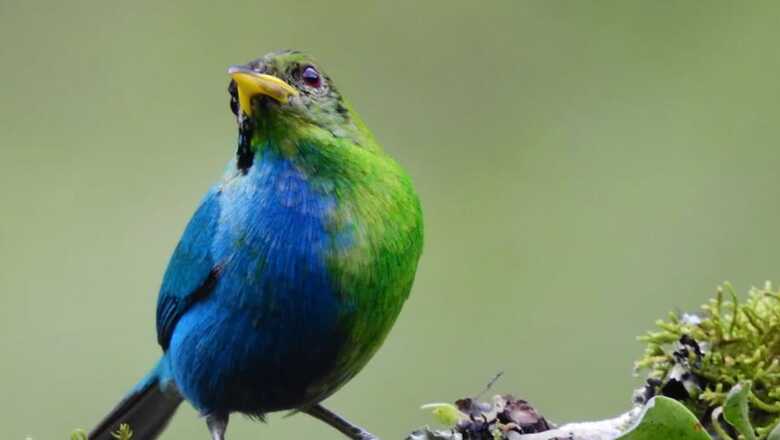
views
For the first time a green honeycreeper that is ‘half male and half female’ has been captured on camera. The unique bird has blue-coloured male plumage on one half of its body and green-coloured female plumage on the other half. This is in stark contrast with typical male green honeycreepers that have bright blue feathers with a black head or females that are green all over. This colour division in the bird was caused by bilateral gynandromorphism. According to Smithsonian Magazine, female birds have a Z and a W chromosome, while males have two Z chromosomes. Bilateral gynandromorphism could occur if a bird “produced a single egg with two nuclei—one with a Z and one with a W chromosome—that becomes double fertilized by two sperm with Z chromosomes."
This is the second known observation of the extremely rare ‘half female, half male’ green honeycreeper. The first observation was made over 100 years ago.
The bird was first spotted by amateur ornithologist John Murillo in a nature reserve near Manizales, Colombia. He then pointed it out to Hamish Spencer, a professor of zoology at New Zealand’s University of Otago, who was on holiday in Colombia at the time. Murillo, Spencer, and a team of other ornithologists then went on to observe this bird for months. They published the findings and observations in the Journal of Field Ornithology in December 2023.
In a statement, Professor Spencer said, “Many birdwatchers could go their whole lives and not see a bilateral gynandromorph in any species of bird. The phenomenon is extremely rare in birds, I know of no examples from New Zealand ever. It is very striking, I was very privileged to see it." He described the bird’s sighting as “arguably the best of a wild bilateral gynandromorphic bird of any species ever."
The researchers observed that over 21 months, the bird behaved like a regular green honeycreeper but had an inclination towards solitary existence. In the research paper, they wrote, “In general, it avoided others of its species, and the others also avoided it; it seems unlikely, therefore, that this individual would have had an opportunity to reproduce." Despite this behaviour, the gynandromorphic bird was “not differentially harassed by other Green Honeycreepers".
The researchers speculated that the internal organs of this bird were also divided bilaterally as male and female but noted that it was impossible to tell by sight alone. They supported their speculation with former studies of other gynandromorphic birds that showed that the birds with mixed plumage also had divided internal organs with “an ovary on the left and a testis on the right."



















Comments
0 comment